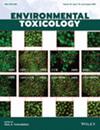Environmental antineoplastics such as sorafenib may pose a risk to humans through water recycling, and the increased risk of cardiotoxicity is a clinical issue in sorafenib users. Thus, developing strategies to prevent sorafenib cardiotoxicity is an urgent work. Empagliflozin, as a sodium-glucose co-transporter-2 (SGLT2) inhibitor for type 2 diabetes control, has been approved for heart failure therapy. Still, its cardioprotective effect in the experimental model of sorafenib cardiotoxicity has not yet been reported. Real-time quantitative RT-PCR (qRT-PCR), immunoblot, and immunohistochemical analyses were applied to study the effect of sorafenib exposure on cardiac SGLT2 expression. The impact of empagliflozin on cell viability was investigated in the sorafenib-treated cardiomyocytes using Alamar blue assay. Immunoblot analysis was employed to delineate the effect of sorafenib and empagliflozin on ferroptosis/proinflammatory signaling in cardiomyocytes. Ferroptosis/DNA damage/fibrosis/inflammation of myocardial tissues was studied in mice with a 28-day sorafenib ± empagliflozin treatment using histological analyses. Sorafenib exposure significantly promoted SGLT2 upregulation in cardiomyocytes and mouse hearts. Empagliflozin treatment significantly attenuated the sorafenib-induced cytotoxicity/DNA damage/fibrosis in cardiomyocytes and mouse hearts. Moreover, GPX4/xCT-dependent ferroptosis as an inducer for releasing high mobility group box 1 (HMGB1) was also blocked by empagliflozin administration in the sorafenib-treated cardiomyocytes and myocardial tissues. Furthermore, empagliflozin treatment significantly inhibited the sorafenib-promoted NFκB/HMGB1 axis in cardiomyocytes and myocardial tissues, and sorafenib-stimulated proinflammatory signaling (TNF-α/IL-1β/IL-6) was repressed by empagliflozin administration. Finally, empagliflozin treatment significantly attenuated the sorafenib-promoted macrophage recruitments in mouse hearts. In conclusion, empagliflozin may act as a cardioprotective agent for humans under sorafenib exposure by modulating ferroptosis/DNA damage/fibrosis/inflammation. However, further clinical evidence is required to support this preclinical finding.


